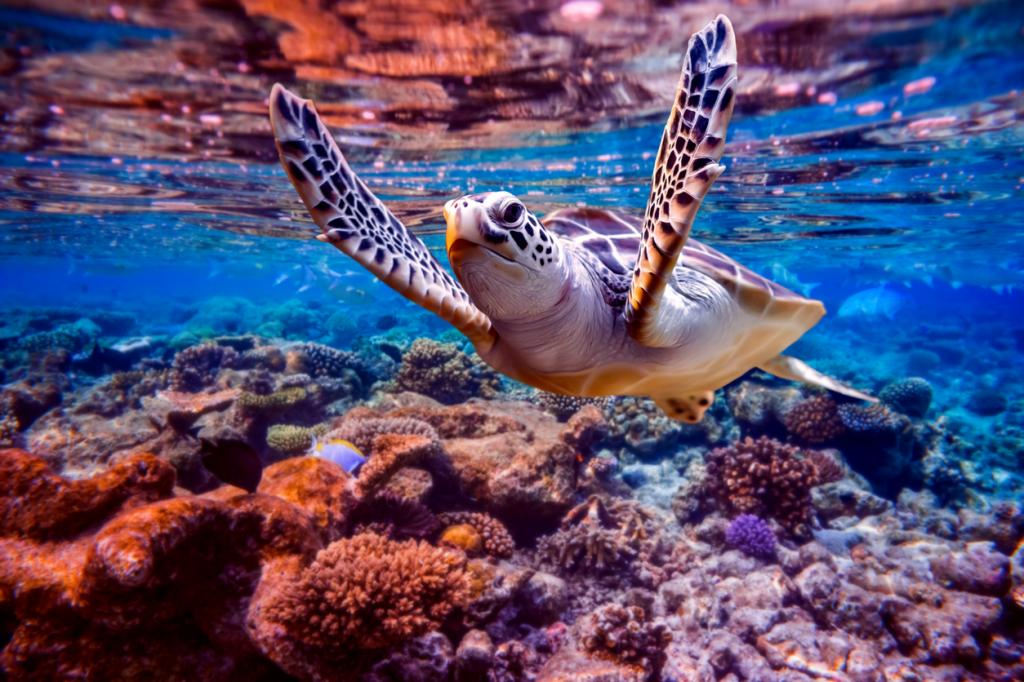





Copyright infringement not intended
Picture Courtesy: https://www.downtoearth.org.in/news/wildlife-biodiversity/cms-cop14-draft-resolution-for-conservation-of-hawksbill-turtle-angelshark-adopted-94482
Context: The 14th Conference of the Parties to the Convention on the Conservation of Migratory Species of Wild Animals (CMS COP14) adopted a Single Species Action Plan to conserve the Hawksbill Turtle in South-East Asia and the Western Pacific Ocean Region.
|
Convention on the Conservation of Migratory Species of Wild Animals (CMS) ●It also known as the Bonn Convention, it is an environmental treaty under the United Nations Environment Programme (UNEP). It aims to conserve migratory species throughout their ranges. ●The Convention was signed in 1979 and came into effect in 1983. As of February 2024, it has 133 Parties (132 countries and the European Union). ●The Convention covers a wide range of migratory species, including birds, mammals, reptiles, fish, and invertebrates. It also covers marine, freshwater, and terrestrial species. The Convention works by encouraging Parties to: ●Adopt and implement strict measures to conserve migratory species and their habitats. ●Cooperate with other Parties to conserve migratory species that range across multiple countries. ●Research migratory species and their habitats. ●Raise public awareness about the importance of migratory species conservation. ●The Convention has been successful in conserving a number of migratory species, including the humpback whale, the African elephant, and the saiga antelope. However, many migratory species are still threatened by habitat loss, hunting, and other human activities. |
About the Hawksbill Turtle Action Plan
Implementation and Directions
|
Hawksbill Turtle ●Hawksbill turtle (Eretmochelys imbricata) is a stunning marine reptile known for its beautiful patterned shell and crucial role in maintaining healthy coral reefs. However, its existence hangs in the balance, classified as Critically Endangered by the IUCN Red List. ●Distinguished by its pointed beak resembling a hawk's, the Hawksbill turtle has a flattened body with flipper-like limbs for swimming. Its carapace (upper shell) boasts intricate patterns of amber, orange, red, yellow, black, and brown, making it highly sought-after in the illegal tortoiseshell trade. ●Primarily found in tropical and subtropical waters worldwide, Hawksbill turtles inhabit coral reefs, rocky areas, estuaries, and lagoons. They are migratory and travel vast distances between feeding and nesting grounds. ●Their specialized diet consists mainly of sponges, using their pointed beak to extract them from crevices in the reef. This helps control sponge populations, preventing them from smothering corals and maintaining reef health. ●Females reach sexual maturity around 20-30 years old and nest on sandy beaches, laying clutches of eggs every 2-4 years. Hatchlings face numerous threats on their journey to the sea, with only a small fraction surviving to adulthood. |
About Angelshark Conservation Action Plan
Implementation Directions
|
Angelshark ●The angelshark (Squatina squatina) is listed as Critically Endangered by the IUCN Red List. ●Flattened body with broad pectoral fins resembling angel wings, hence the name. They have two dorsal fins and one anal fin. Their colours range from grey to brown with darker spots or marbling. ●Up to 4m (13ft) long, making them the largest of the angelsharks. ●Primarily found in shallow coastal waters and sandy/muddy bottoms of continental shelves. They inhabit the Mediterranean Sea, the Black Sea, and the eastern Atlantic Ocean. ●Solitary hunters use camouflage and their ability to bury themselves in sand to ambush prey. Their diet consists mainly of benthic fish, crustaceans, and mollusks. ●Ovoviviparous, meaning they give birth to live young after internal fertilization. Litters range from 6-22 pups, with an extended gestation period (up to 2 years). |
Conclusion
Must Read Articles:
CMS COP14: https://www.iasgyan.in/daily-current-affairs/cms-cop14
|
PRACTICE QUESTION Q. Which of the following statements accurately reflect the conservation status of Hawksbill Turtles and Angelsharks? 1. Both species are listed as Critically Endangered by the IUCN Red List. 2. Hawksbill Turtles have a wider geographic range than Angelsharks. 3. Angelsharks face a greater threat from habitat degradation than Hawksbill Turtles. 4. Both species are primarily threatened by overfishing and bycatch. 5. Hawksbill Turtles have a higher reproductive rate than Angelsharks. Select the correct code: A) Only two B) Only three C) Only four D) All five Answer: B Explanation: Statement 1 is Correct: Both Hawksbill Turtles and Angelsharks are indeed listed as Critically Endangered by the IUCN Red List, facing an extremely high risk of extinction in the wild. Statement 2 is incorrect: While both species have experienced range reductions, Hawksbill Turtles historically had a wider geographic distribution spanning tropical and subtropical waters across the Atlantic, Indian, and Pacific Oceans. Angelsharks were primarily found in the Mediterranean Sea and eastern Atlantic. Statement 3 is incorrect: Both species face significant habitat degradation threats due to coastal development, pollution, and sand extraction. However, the specific impact may vary depending on location and specific habitat types. While Angelsharks heavily rely on shallow coastal areas, Hawksbill Turtles utilize a wider range of habitats, including coral reefs, which might be facing different degradation pressures. It's difficult to definitively say which species faces a greater overall threat from habitat degradation without considering specific regional contexts. Statement 4 is Correct: Overfishing and bycatch are indeed major threats for both Hawksbill Turtles and Angelsharks. They are often caught accidentally in fishing gear, leading to injury, death, and population decline. Statement 5 is Correct: Hawksbill Turtles have a higher reproductive rate than Angelsharks. Hawksbill Turtles lay clutches of up to 200 eggs, while Angelsharks give birth to live young in litters of 6-22 pups. The extended gestation period and lower number of offspring make Angelsharks more vulnerable to population declines. |







© 2025 iasgyan. All right reserved